Anti-aircraft self-propelled installation Fliegerabwehrpanzer 68 (Switzerland)
Combat development aviation clearly demonstrated the need to improve military air defense. In the mid-seventies, the Swiss military department came to the conclusion that it was necessary to create, adopt and build self-propelled anti-aircraft installations with missile or artillery weapons. Soon, the first proposals on this subject were received. One of them came from a leading Swiss company, which decided to join forces with foreign colleagues.
In 1977, the Eidgenössische Konstruktionswerkstätte, Oerlikon, Contraves and Siemens organizations proposed their own version of a promising air defense vehicle for the ground forces. Swiss and German companies jointly formed the overall look of the new anti-aircraft self-propelled gun and offered it to a potential customer. The proposed version of the ZSU, in general, suited the Swiss military, which resulted in an order to continue the work and the subsequent production of two prototypes of armored vehicles required for testing.
The new project proposed the use of some ideas directly borrowed from foreign projects. Moreover, the new ZSU for Switzerland was to use part of the finished components, refined in one way or another. In fact, after analyzing the available capabilities, the easiest way to create a promising technique was chosen. It was proposed to take the existing Swiss-made chassis and the gun turret with weapons and control systems, borrowed from a serial foreign model. The basis for such a technique was to become a chassis tank Panzer 68, and the combat module was borrowed from the German self-propelled gun Flakpanzer Gepard, adopted for service several years ago.
In the course of developing a new project, specialists from three companies from two countries had to solve several specific tasks related to the adaptation of the existing tower to a new chassis. Such works were not simple, but still could not be compared in their complexity with the creation of technology from scratch. The relative simplicity of the new project has reduced the time of its development and the time required for the construction of experimental equipment. Already in 1979, the development of the project was completed, and after a few months, the two required prototypes were submitted for testing.
A promising anti-aircraft self-propelled unit received the designation Fliegerabwehrpanzer 68. This name indicates a class of technology, and also reflects the type of the base chassis - Pz 68. Unlike the other Swiss armored vehicles of that period, this time the number in the title was not related to the year the vehicle appeared or was put into service.
Self-propelled "Cheetah" German development differed from the Swiss armored vehicles large size shoulder strap tower. This feature of the existing combat module led to the need to refine the hull of the Pz 68 tank. The authors of the new project had to change the design of the roof and sides, and also slightly modify the layout of the internal compartments. At the same time, the possibility of preserving the mass of components and aggregates, as well as their original location, remained. The updated case, as before, was proposed to be made by casting. Homogeneous reservations were maintained with a thickness of up to 120 mm in the frontal part. The layout of the body, in general, remained the same. The front compartment contained the control compartment, in the center there was the combat compartment, and the power plant was located in the stern.
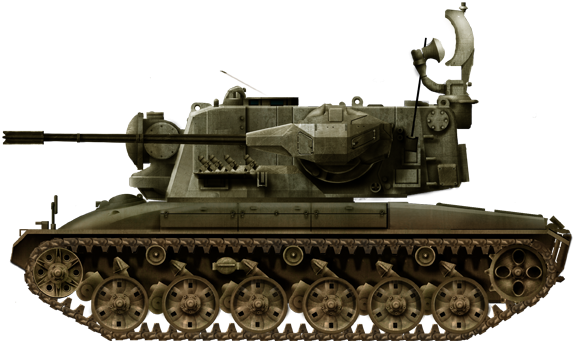
General view of the self-propelled gun
The use of increased shoulder strap led to the forward shift of the control compartment and the corresponding processing of the frontal part of the body. To accommodate all the necessary units, the existing case had to be lengthened by 180 mm with an additional insert. The frontal part of the body was still formed by two curved surfaces, but its shape was changed, and the angles of inclination were reduced. Immediately after the frontal assembly there was a modified turret box. Now it was much wider, its airborne parts served as fencing niches. Boxes for property, which were available on the sides of the base tank, were moved to the stern. Similar modifications of the hull several years earlier were used to create the Panzerkanone 68 ACS. The sloped roof of the engine compartment and the feed detail of a complex shape were preserved.
From the base medium tank Pz 68, the new self-propelled gun received a power plant, made in the form of a single unit. Its basis was the carburetor engine Mercedes Benz MB 837 Ba-500 with power 660 hp. An auxiliary power unit was also used in the form of a Mercedes Benz OM 636 engine with a power of 38 hp. The transmission for the Fliegerabwehrpanzer 68 was borrowed from the Pz 68 tanks of the later series, it provided six forward speeds and two rear.
The existing undercarriage remained on the basis of six dual track rollers with rubber bands. The rollers received an individual suspension on balancers with cup springs and hydraulic dampers. Above the support rollers were placed three pairs of supporting rollers. The front of the hull had mounts for sloths, there were driving wheels in the stern. A caterpillar of the Pz 68 tank, 520 mm wide, equipped with rubber pads was used.
The project Fliegerabwehrpanzer 68 proposed the use of a ready-made combat module, developed earlier for the German Gepard ZSU. The latter was created in the early seventies and from 1973-th was in mass production. The armed forces of Germany began operating new machines in the 1975-76 years - just before the appearance of a request from the Swiss military. Thus, the Swiss army had every chance to get a modern sample of the air defense system using the latest components with the highest possible characteristics at the moment.
The tower, borrowed from the German ZSU, had a characteristic shape. To install on the hull shoulder was intended platform of the required diameter of small height. On top of it was located a large large building with a reduced width. The combat module had anti-bullet and splinter protection. The specific shape of the tower was due to the external placement of some devices, including weapons. In the frontal part of the tower was placed a platform with mounts for mounting one of the antennas of radar stations. On the sides, in turn, were located swinging artillery installations.
The front part of the tower is given under a double habitable compartment with jobs for the commander and the gunner. Behind this volume is provided a compartment for ammunition boxes and some special equipment. In addition, in the stern of the tower mounted folding antenna surveillance radar.
The Flakpanzer Gepard ZSU tower of the first modification was equipped with two radar stations for monitoring the air situation and tracking the targets. The search for dangerous objects was carried out using the MPDR-12 station, the antenna of which was located at the rear of the tower. On the installation in front of the tower was attached to the rocking antenna radar pointing guns. The data from both stations entered the onboard fire control system and were taken into account when calculating the guidance angles. An analog fire control system collected data from a variety of sensors and took them into account when aiming weapons. The calculations used data on the position of the machine, information on current pickup angles and the initial velocity of the projectiles, determined by special self-supporting sensors.
On the sides of the turret, synchronized rocking artillery installations were deployed. In a special protected housing of complex shape, which has its own vertical guidance drives, the 35-mm automatic gun Oerlikon KDE was placed. A gun with a barrel length 90 calibers is able to use various types of ammunition, accelerate them to speeds of the order of 1175 m / s and show the rate of fire at the level of 550 rounds per minute. Tape ammunition was used. The ammunition of each of the two guns consisted of several types of 310 projectiles. The basis of ammunition were unitary shots with high-explosive and armor-piercing shells. In addition, the possibility of using armor-piercing sabot projectiles necessary to combat ground equipment.
The equipment of the Cheetah tower of the first modification made it possible to detect targets and take them for tracking at distances up to 15 km. The effective firing range when attacking air targets reached 3500 m. Remote-guided pointing drives made it possible to fire targets in any direction in azimuth at elevation angles from -10 ° to + 85 °.
On the side of the platform of the tower were placed two groups of smoke grenade launchers with three products in each. Used traditional for the Swiss technology system caliber 80 mm. Each grenade launcher was equipped with two ammunition. Other auxiliary weapons for self-defense in certain situations were absent.
A three-man crew was supposed to drive the Fliegerabwehrpanzer 68 self-propelled gun. The driver was placed in the center of the front of the hull at its usual place. It was proposed to get into the control room with the help of a sunroof, equipped with several periscopic devices. Above the hatch, a lattice cover was installed to protect the driver from the turning tower. Jobs commander and gunner were in the tower. Above them was a common hatch in the roof, equipped with a large number of viewing devices. At the commander’s and carrier positions there was a complete set of devices for monitoring the operation of two radars and controlling weapons.
The Swiss project implied the use of the finished chassis and the existing production turret, which led to the expected consequences in terms of size and weight of the vehicle. The total length of the self-propelled self-propelled gun Fliegerabwehrpanzer 68 reached 7,5 m, width - 3,3 m, height (on the roof of the tower) - 3,14 m. When the radar detection antenna was raised, the height increased by about 1160 mm. Combat weight reached 46 t. The increase in the weight of the vehicle, combined with the preservation of the existing powerplant, led to some deterioration in mobility compared to serial medium tanks. So, the maximum speed was reduced to 52 km / h.
The participation of foreign companies that had previously contributed to the creation of the Gepard project had a positive impact on the speed of work under the Fliegerabwehrpanzer 68 project. In addition, cooperation with the German industry and the selected architecture of the equipment allowed us to quickly build an experienced technique. In 1979, the Swiss company K + W Thun rebuilt a pair of new Pz 68 serial chassis tanks and installed towers from their German counterparts on them. Soon this technique was brought to the site for testing. Experienced machines received the serial numbers M0888 and M0889.
Detailed information about the tests ZSU Fliegerabwehrpanzer 68 missing. There is reason to believe that the checks could succeed, since the project used only existing and proven components. At the same time, we should not forget that in the same 1979 year, the general public learned about the mass deficiencies of the medium tank Pz 68, some of which could go to self-propelled guns. In particular, the transmission did not allow reverse gear to be turned on until the tank was completely stopped, which could seriously hamper movement and maneuvering. This and other problems associated with the chassis and its units, could well have an impact on the course of testing. The tower from the ZSU "Cheetah", in turn, by this time has passed all the checks and fine-tuning, because of which could hardly be a source of serious problems.
Tests of two prototypes of the new anti-aircraft self-propelled continued for several months. The checks ended in 1980, after which the military department had to decide on the issue of adopting equipment and ordering mass-produced vehicles. In the very near future, the companies participating in the project could get a lucrative contract for the construction of a significant number of the latest self-propelled guns.
Despite the results, tests of promising technology did not lead to real results. The Federal Military Department examined the current state of the art in the field of air defense, assessed the latest domestic development, compared it with foreign counterparts, and made certain conclusions. The military department decided to abandon the adoption of the Fliegerabwehrpanzer 68 ZSU. The reasons for this decision were simple: experts found, as they thought, a more successful and profitable option for re-equipping the ground forces.
After studying the latest developments in the missile sphere, the Swiss military became disillusioned with anti-aircraft systems with artillery weapons. Much more effective and promising, in their opinion, looked like missile systems. Soon, a new contract appeared, under which Switzerland purchased several dozen Rapier towed-up missile systems from the UK. Such complexes are still in service and in fact are the basis of the Swiss air defense system.
Having chosen the import anti-aircraft system, the military department ordered to stop work on its own project, which was no longer of interest. Two built prototypes of the Fliegerabwehrpanzer 68 were returned to the company that carried out their final assembly. Later, one of the machines with the M0888 serial number was transferred to the Panzermuseum Thun armored museum in Thun. The exact fate of the second self-propelled unknown. Probably, it was disposed of as unnecessary.
Planning to re-equip its army, Switzerland attempted to create a new model of a self-propelled armored combat vehicle capable of fighting a potential enemy’s aircraft. In the shortest possible time, with the help of several domestic and foreign enterprises, a promising project of such equipment was created, and then two experimental machines were launched for testing. The Fliegerabwehrpanzer 68 self-propelled guns had every chance to enter service and increase the combat capability of the ground forces, but the military changed their views on the development of air defense. Artillery self-propelled preferred towed missile systems. Another own project of armored vehicles was stopped at the stage of ground tests.
On the materials of the sites:
http://tanks-encyclopedia.com/
http://armeemuseum.ch/
http://militaerfahrzeuge.ch/
http://militaryfactory.com/
- Ryabov Kirill
- Tanks-encyclopedia.com, Wikimedia Commons
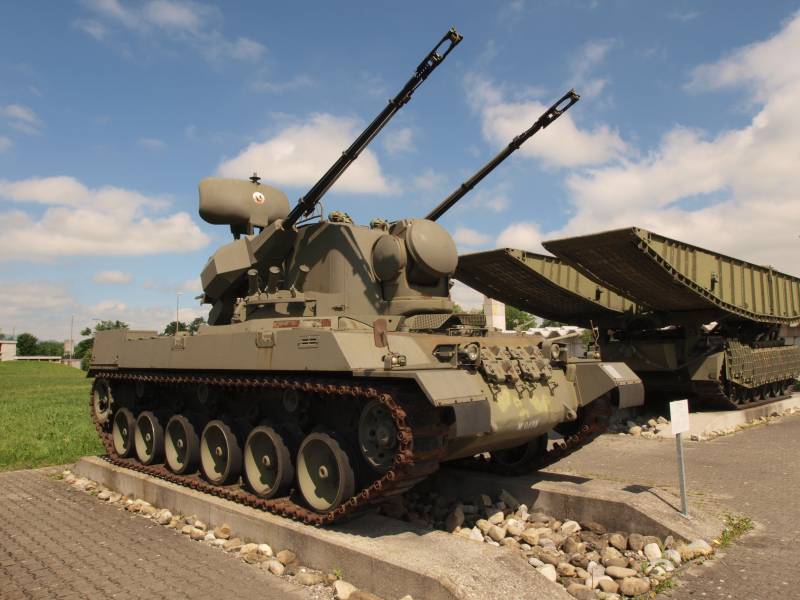
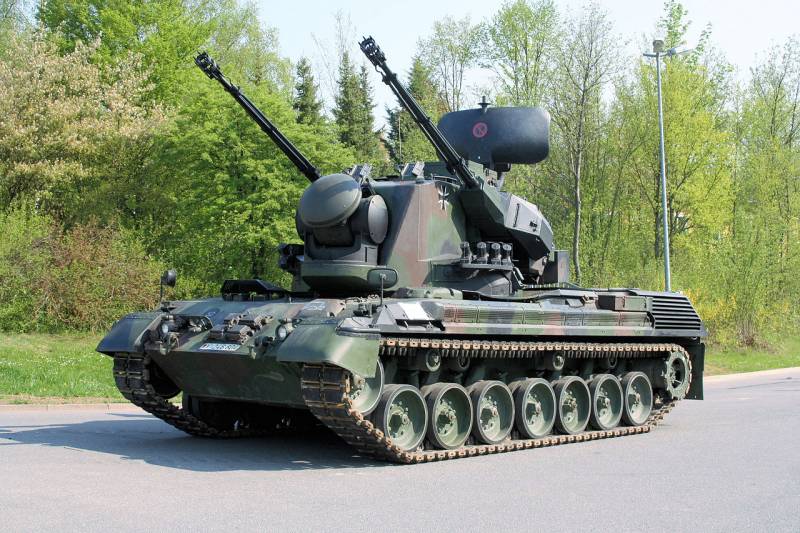
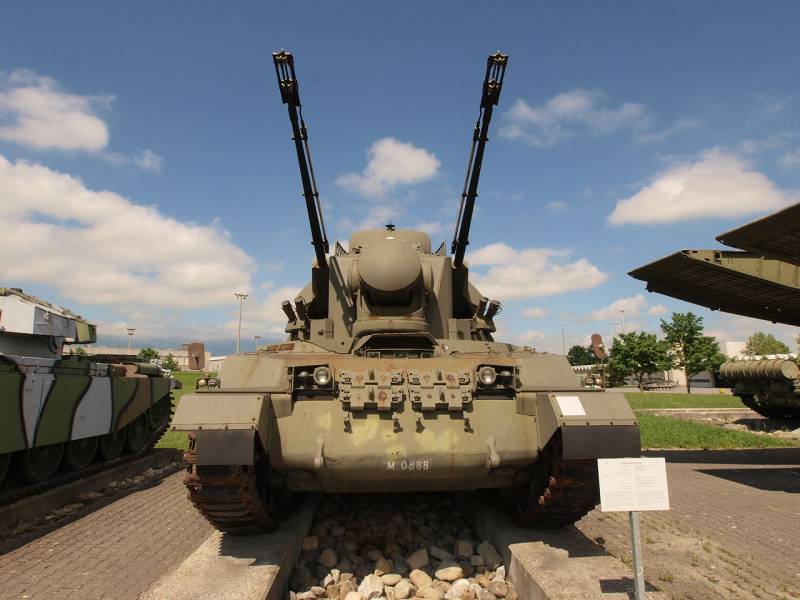
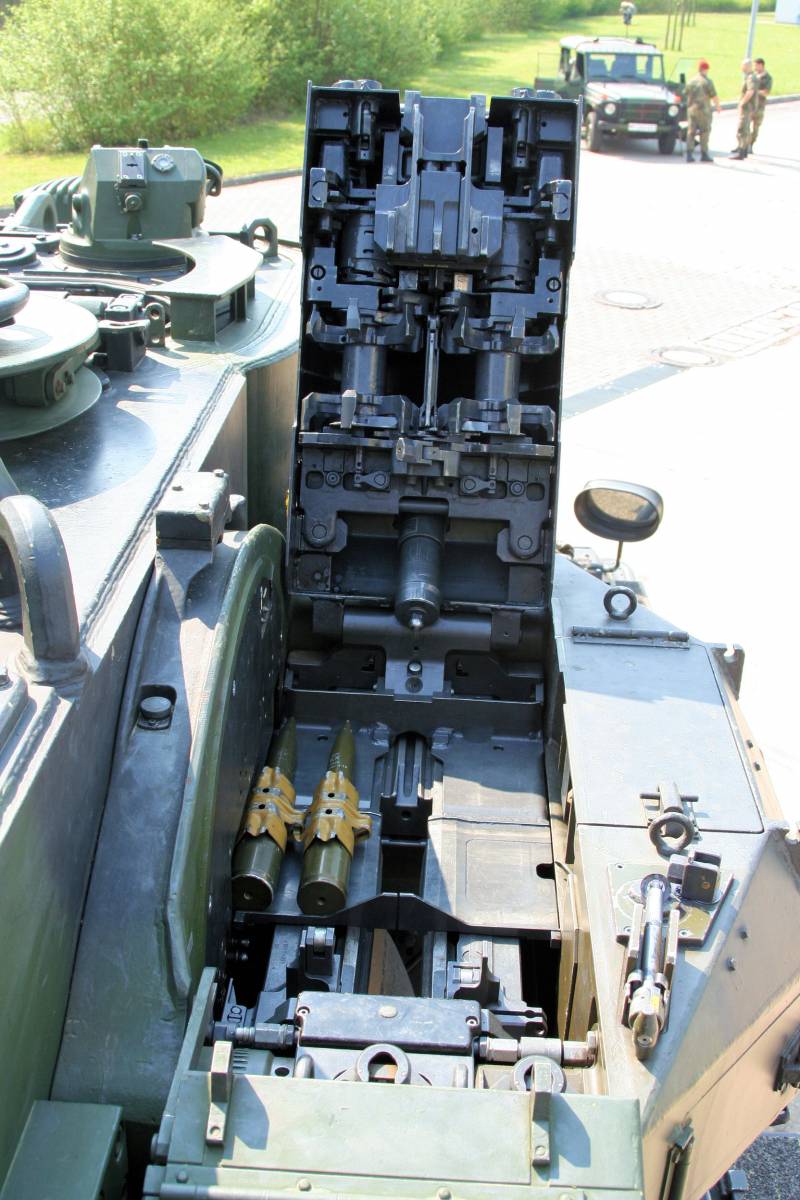
Information